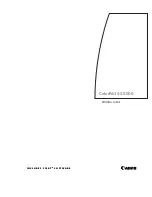94
Chapter 4: Technical Reference
A8
+5 V
A9
Reserved
A10
+5 V
A11
Reserved
A12
GND
A13
GND
A14
Reserved
A15
RST_L
A16
+5 V
A17
GNT_L
A18
GND
A19
Reserved
A20
AD30
A21
+3.3 V *
A22
AD28
A23
AD26
A24
GND
A25
AD24
A26
IDSEL
A27
+3.3 V *
A28
AD22
A29
AD20
A30
GND
A31
AD18
Table 4-18 (continued)
PCI Connector Pinouts
Pin
Signal
Summary of Contents for 1400
Page 1: ...SGI 1400 Server Family Maintenance and Upgrades Guide Document Number 007 3948 001 ...
Page 12: ......
Page 14: ......
Page 30: ...16 Chapter 1 Working Inside the System Figure 1 7 Removing EMI Shields ...
Page 70: ......
Page 78: ......
Page 130: ......
Page 150: ......
Page 152: ......
Page 156: ......
Page 162: ......


















